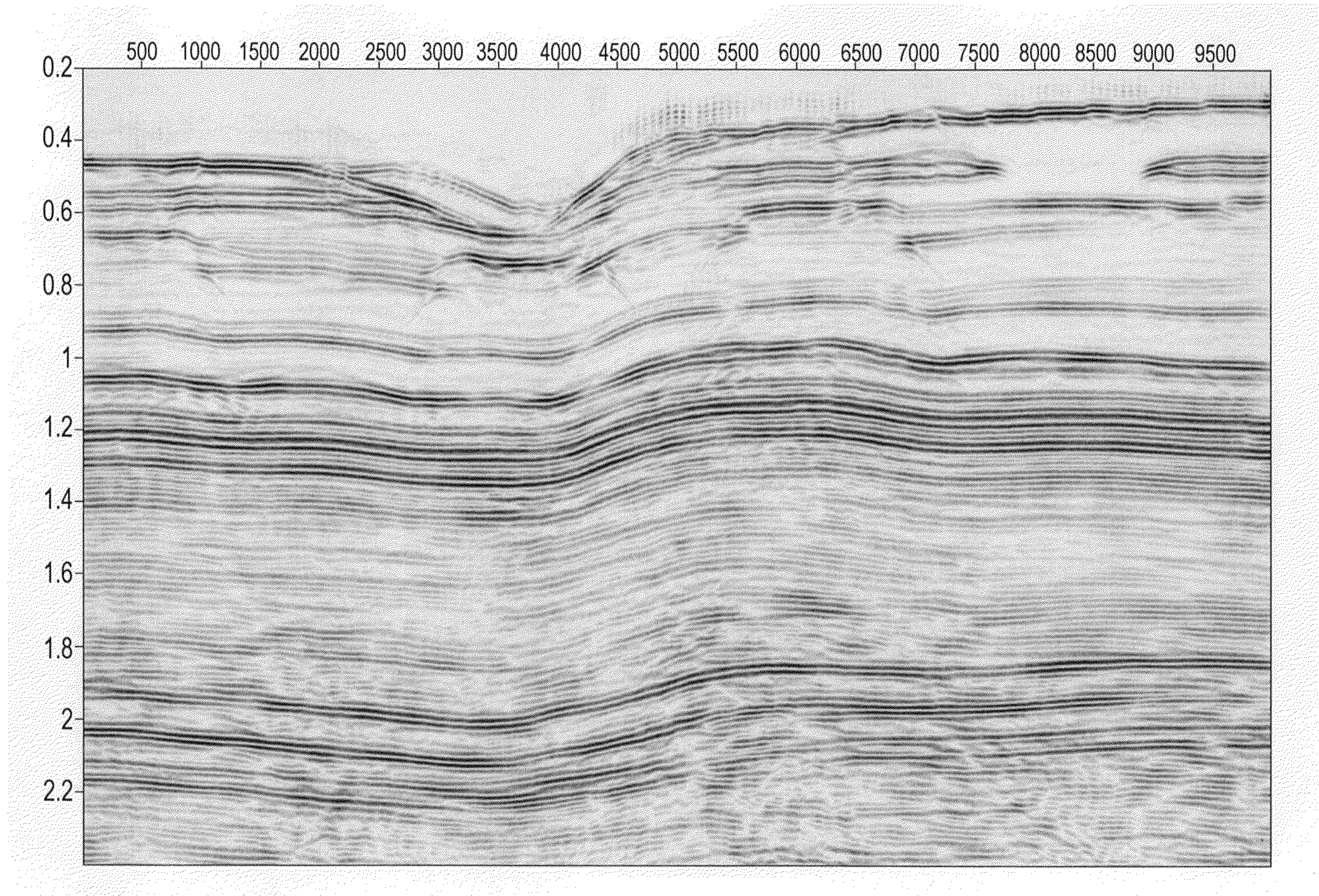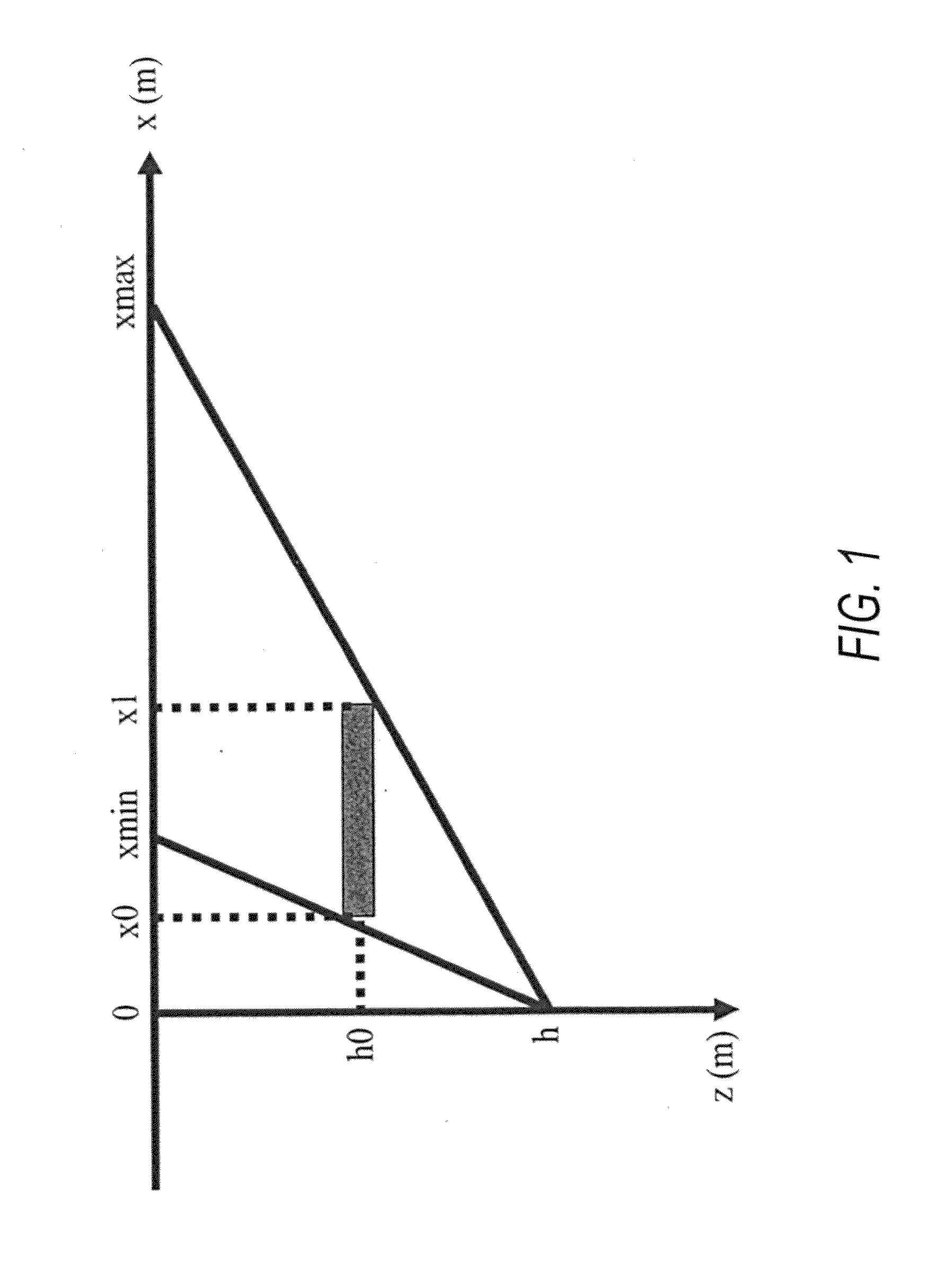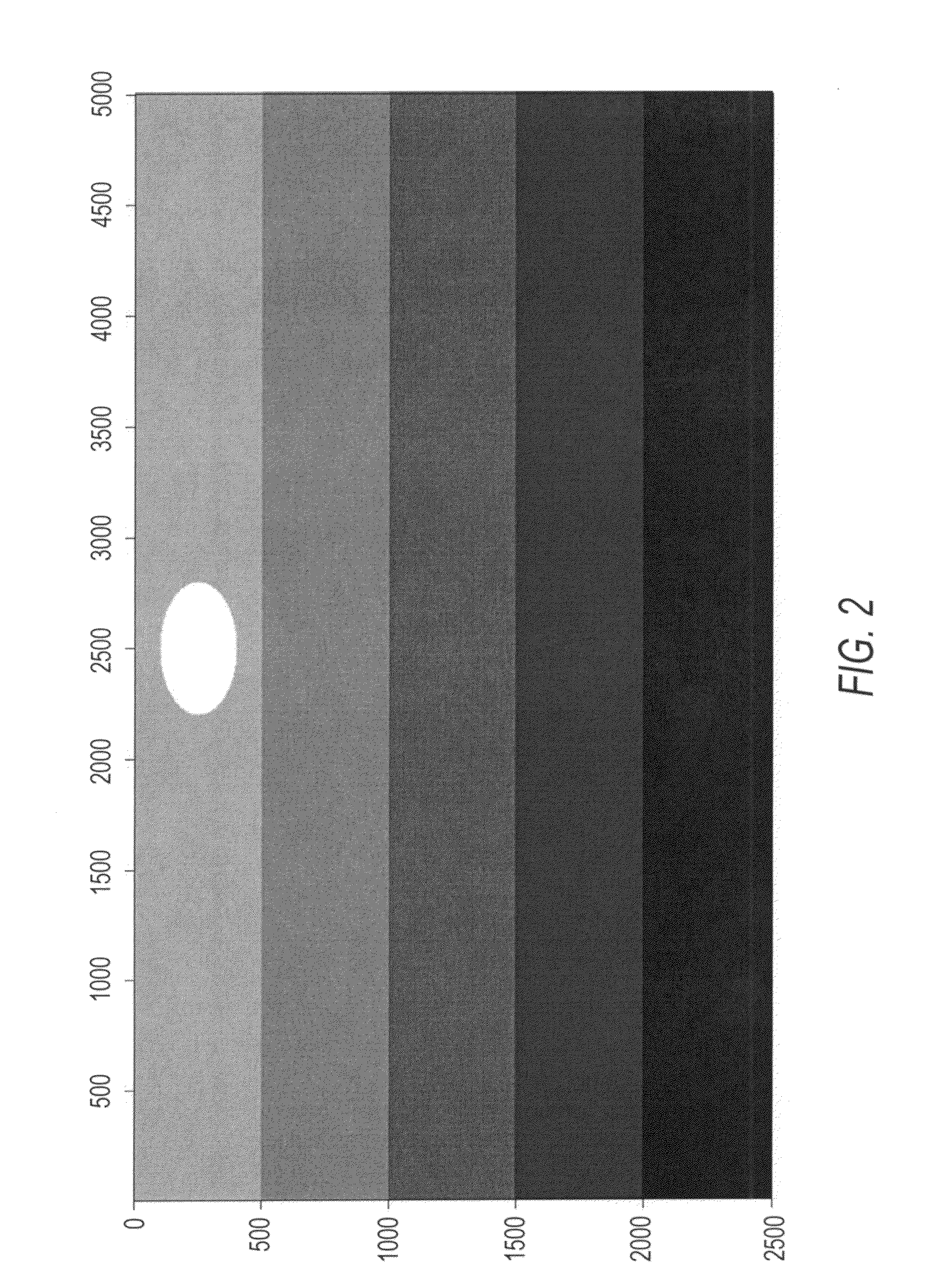Non-hyperbolic correction of seismic data
a seismic data and non-hyperbolic technology, applied in the field of seismic data correction, can solve the problems of static solution not accurately solving the problem of clarifying data, non-hyperbolicity degrades seismic image, and non-hyperbolic seismic events
- Summary
- Abstract
- Description
- Claims
- Application Information
AI Technical Summary
Problems solved by technology
Method used
Image
Examples
example using 2d
[0047]An acoustic finite difference algorithm was used to create synthetic shot records for the synthetic velocity model depicted in FIG. 9, which represents a subsurface model containing a wadi, several layers with lateral velocity-variations embedded in the near surface and a number of smooth deep reflectors. The sources are located from x=0 m towards x=10000 m. The shot records are modeled with a moving split-spread geometry with an offset range of 4800 m and a source and receiver interval of 20 m. The synthetic shot records have been processed and a horizon-consistent velocity analysis was performed to obtain the brute stack of the data shown in FIG. 10 that depicts the surface stack before applying the NHC method of the present invention.
[0048]FIG. 10 shows that all the horizons from t=0.8 sec and after appear to be broken. This is the result of the block-shaped layers visible in FIG. 9 at around z=600 m. As noted above, these discontinuities cannot be resolved us...
PUM
 Login to View More
Login to View More Abstract
Description
Claims
Application Information
 Login to View More
Login to View More - R&D
- Intellectual Property
- Life Sciences
- Materials
- Tech Scout
- Unparalleled Data Quality
- Higher Quality Content
- 60% Fewer Hallucinations
Browse by: Latest US Patents, China's latest patents, Technical Efficacy Thesaurus, Application Domain, Technology Topic, Popular Technical Reports.
© 2025 PatSnap. All rights reserved.Legal|Privacy policy|Modern Slavery Act Transparency Statement|Sitemap|About US| Contact US: help@patsnap.com



